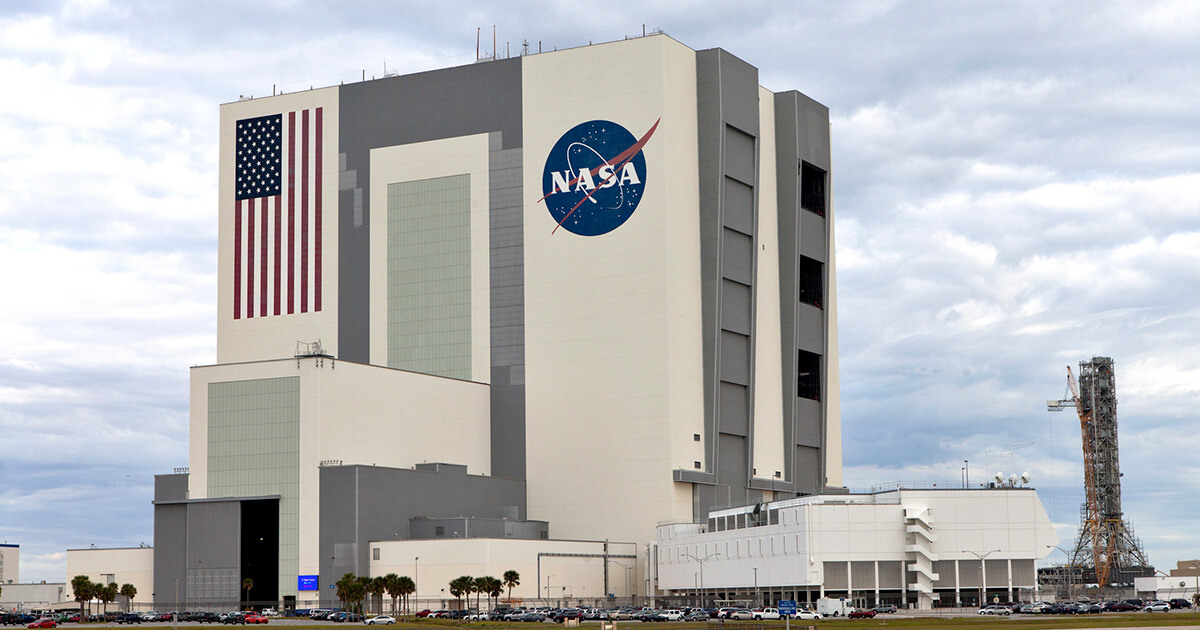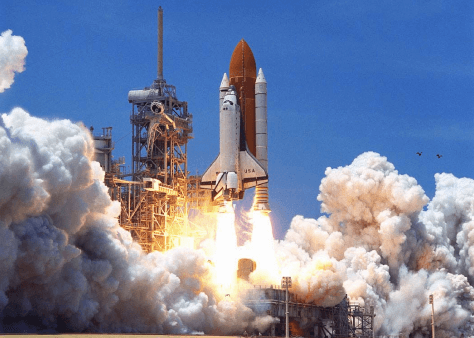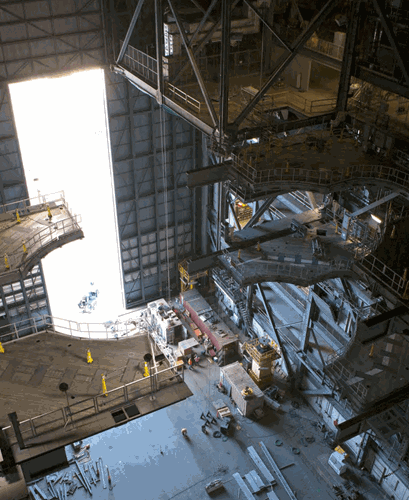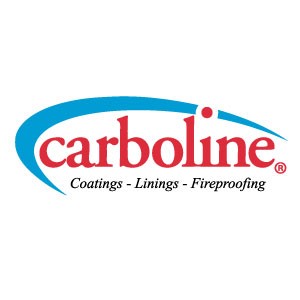
On May 25, 1961, President John F. Kennedy asked Congress to commit to landing a man on the moon before the end of the decade, raising the stakes in the Space Race.
NASA’s Saturn V launch vehicle would be the workhorse of the Apollo Program. It was the largest spacecraft ever designed. But before the super-heavy rockets could lift off, the agency needed a building of immense scale in which to build them. Construction of the now-iconic Vertical Assembly Building (VAB) began in August of 1963 at what we know today as Kennedy Space Center.
Completed in 1966, the VAB remains one of the largest buildings in the world. Made of structural steel, it is 52 stories high, stretches 515 feet (157 meters) wide, and covers eight acres (3.2 hectares) of land.
All that structural steel inside the VAB as well as that specified for the launch arm/umbilical towers needed to be coated to prevent degradation.
However, its location in Florida is one of the most corrosive coastal areas in the country due to the combination of ocean salt spray, heat, humidity, and frequent precipitation.
If climate, weather, and geography weren't enough, with every mission launch comes high volumes of acidic exhaust, making the area at and near the launchpads even more corrosive. These conditions made coating system selection particularly challenging.

Coating the Structures
A total of 89,000 tons (80,739 tonnes) of structural steel inside the VAB and the launch arm/umbilical towers at Complex 39 were fabricated in Tampa, coated with Carbozinc 11, and shipped to the laydown yard at Cape Canaveral. It was erected and touched up with additional layers of Carbozinc 11.
We know now that Carbozinc 11 is the industry’s superior inorganic zinc primer, but in the mid-1960s, it had only been on the market for around a decade. No one knew for sure how long it would protect the infrastructure at Complex 39, but through accelerated corrosion testing, a service life of 50 years was predicted.
Prior to our development of Carbozinc 11, zinc primers had to be cured using a post-cure solution sprayed onto painted steel members in a cumbersome two-step process. Carbozinc 11 allowed the steel to be fabricated, blast cleaned, primed, and then handled almost immediately after priming, speeding up fab shop processes.
The product was a game-changing innovation during the industrial construction boom of the 1960s.

Passing the Test of Time
On July 16, 1969, American astronauts strapped to the top of Saturn V SA-506 lifted off for the moon. Four days later, they landed there, and Armstrong and Aldrin became household names.
After 50 years of service, the VAB had its first re-paint in 2016, meeting the 50-year service life prediction we’d made for Carbozinc 11 in hyper-corrosive environments.
Over the past 60-plus years, the Kennedy Space Center and the infrastructure built there has helped the coatings industry develop significant corrosion protection expertise, particularly in the advancement of the science of zinc-rich primers.
Results from coating evaluation studies over that time have shown that inorganic zinc-rich primers outperform their organic counterparts in this environment, and that inorganic zinc-rich primers are the best choice for long-term protection of launch equipment and ground support structures.
In 2016, Carboline received the SSPC Charles G. Munger Award, granted for an “outstanding industrial or commercial project demonstrating longevity of the original coating,” for the 50 years of protection at Complex 39.
The VAB was the first and most historically significant project on which NASA and Carboline collaborated. Many more followed, including coating with Carbozinc 11 the Space Shuttle Mount-Dismount Device at Vandenberg Air Force Base in California.
Nearly 60 years later, Carbozinc 11 is just as reliable as it was in the early 1960s. It set the standard then, and has been the standard ever since.

